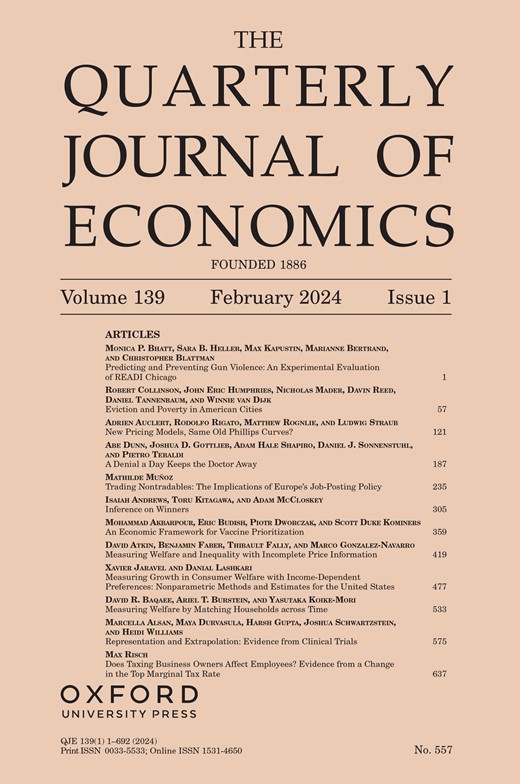我们所教授的种族和性别:儿童书籍图像和文本的表现
IF 12.7
1区 经济学
Q1 ECONOMICS
引用次数: 0
摘要
书籍塑造了孩子们了解社会和规范的方式,部分是通过不同角色的表现。我们使用计算工具来描述过去一个世纪在家庭、教室和图书馆广泛阅读的儿童书籍中的代表性,并描述可能促成这些模式的经济力量。我们介绍了新的人工智能方法来系统地将图像转换为数据。我们将这些工具与文本分析方法一起应用于测量这些书籍内容中的肤色、种族、性别和年龄,记录随着时间的推移,哪些发生了变化,哪些经久不衰。我们发现,在最具影响力的书籍中,黑人和拉丁裔的代表性不足,相对于他们的人口比例而言,尽管黑人的代表性随着时间的推移而增加。女性也越来越多地出现在文本中,但在图像中出现的频率比在图像中出现的频率要低,这表明图片中的象征性包含比在故事中的实质性包含更多。在这些有影响力的书中,人物的平均肤色比其他书中的人物要浅,即使在种族条件下也是如此,儿童的平均肤色比成年人要浅。我们提出了相关经济行为的实证分析,以更好地理解我们在这些书中发现的代表性。在需求方面,我们表明人们消费以自己身份为中心的书籍,购买的儿童书籍类型与当地的政治信仰相关。在供应方面,我们记录了以非主流社会身份为中心的书籍价格上涨,而这些书在主要为白人社区服务的图书馆里的销量却更少。本文章由计算机程序翻译,如有差异,请以英文原文为准。
What We Teach About Race and Gender: Representation in Images and Text of Children’s Books
Books shape how children learn about society and norms, in part through representation of different characters. We use computational tools to characterize representation in children’s books widely read in homes, classrooms, and libraries over the past century and describe economic forces that may contribute to these patterns. We introduce new artificial intelligence methods for systematically converting images into data. We apply these tools, alongside text analysis methods, to measure skin color, race, gender, and age in the content of these books, documenting what has changed and what has endured over time. We find underrepresentation of Black and Latinx people in the most influential books, relative to their population shares, though representation of Black individuals increases over time. Females are also increasingly present but appear less often in text than in images, suggesting greater symbolic inclusion in pictures than substantive inclusion in stories. Characters in these influential books have lighter average skin color than in other books, even after conditioning on race, and children are depicted with lighter skin color than adults on average. We present empirical analysis of related economic behavior to better understand the representation we find in these books. On the demand side, we show that people consume books that center their own identities and that the types of children’s books purchased correlate with local political beliefs. On the supply side, we document higher prices for books that center nondominant social identities and fewer copies of these books in libraries that serve predominantly White communities.
求助全文
通过发布文献求助,成功后即可免费获取论文全文。
去求助
来源期刊

Quarterly Journal of Economics
ECONOMICS-
CiteScore
24.20
自引率
2.20%
发文量
42
期刊介绍:
The Quarterly Journal of Economics stands as the oldest professional journal of economics in the English language. Published under the editorial guidance of Harvard University's Department of Economics, it comprehensively covers all aspects of the field. Esteemed by professional and academic economists as well as students worldwide, QJE holds unparalleled value in the economic discourse.
 求助内容:
求助内容: 应助结果提醒方式:
应助结果提醒方式:


